Adrian Collins's Blog, page 45
August 19, 2024
REVIEW: A Sorceress Comes to Call by T. Kingfisher
A Sorceress Comes to Call is the latest novel by Hugo and Nebula Award-winning novelist T. Kingfisher. T. Kingfisher is a well-liked author amongst the reviewers of Grimdark Magazine, with our team having reviewed many of her releases. From novellas like her recent Thornhedge or What Feasts at Night and her novels such as A House with Good Bones and Nettle and Bone. Kingfisher is a personal favourite of mine; I greatly enjoy her precise mix of the horrific and the endearing, the voices she gives to female characters who are so often overlooked, and her unique spin on folk tales. A Sorceress Comes to Call is no exception to this, being inspired by the Brothers Grimm’s Goose Girl. Though as I have no recollection whatsoever of that tale, I went into A Sorceress Comes to Call with no preconceptions about the plot (other than expecting geese to appear at some point) and the knowledge that I have never yet been disappointed at the end of my time reading a T. Kingfisher story. Luckily, I was right on both counts; there were indeed geese, and I had a wonderful time reading A Sorceress Comes to Call.
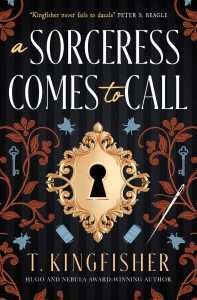 A Sorceress Comes to Call is the tale of Cordelia, a young woman who knows her mother is unusual. No closed doors are allowed inside their home, obedience is non-negotiable, and friendships are actively discouraged. Cordelia’s only freedom is in her daily rides on her mother’s horse – the horse she believes to be her only friend. After a grotesque murder in their small town, her mother orders them to flee to the house of a wealthy bachelor, the Squire, and his spinster sister, Hester. Hester immediately sees the nefarious intentions of Cordelia’s mother, Evangeline, to trap her brother into marriage. But she also sees how Cordelia jumps at every noise and shrinks away from her mother. Hester knows she must keep her brother safe from his enchanting house guest, but soon realises she must rescue Cordelia.
A Sorceress Comes to Call is the tale of Cordelia, a young woman who knows her mother is unusual. No closed doors are allowed inside their home, obedience is non-negotiable, and friendships are actively discouraged. Cordelia’s only freedom is in her daily rides on her mother’s horse – the horse she believes to be her only friend. After a grotesque murder in their small town, her mother orders them to flee to the house of a wealthy bachelor, the Squire, and his spinster sister, Hester. Hester immediately sees the nefarious intentions of Cordelia’s mother, Evangeline, to trap her brother into marriage. But she also sees how Cordelia jumps at every noise and shrinks away from her mother. Hester knows she must keep her brother safe from his enchanting house guest, but soon realises she must rescue Cordelia.
As with most of Kingfisher’s writing, its darkness stems from psychological rather than explicit events. This is true in A Sorceress Comes to Call, with the coercive control displayed by Evangeline being downright terrifying in its potential. When Cordelia is ‘made obedient,’ her mother controls everything Cordelia’s body does – she can make her eat, talk, and interact with others like a human puppet. Only sometimes her mother forgets to do things – like make Cordelia go to the toilet or drink all day. Evangeline shows in the story that she has no problem using this power to make people do terrible things to others, consequently Cordelia lives in constant fear of what she may be forced to do. After these occurrences of being ‘made obedient,’ Cordelia is often told things like “I’m sure you will do better next time” or blamed for being so useless that her mother has had to control her in such a way. Also, the way that doors have been removed from the house and Evangeline does things like walk in while Cordelia is in the bathroom or reads her diary because it’s ‘nothing she hasn’t seen before’ or they ‘have no secrets’ show from the opening pages of the novel that Cordelia’s home life is truly awful.
The abuses that Cordelia suffers at the hands of her mother are the only thing that gives me pause in recommending A Sorceress Comes to Call wholeheartedly. Much like I warned people before recommending Nettle and Bone that parts of the story may upset some readers, I feel similarly here. The relationship between Cordelia and her mother is meant to make readers uncomfortable, and it does. But if you have been a survivor of a similar abusive relationship, the depiction may well make you feel more than awkward. Kingfisher handles this relationship with the delicacy it warrants, and it feels essential for the plot. It is a highly effective portrayal; I have rarely disliked a character so quickly and intently as I did Evangeline for how she treats her daughter. If Cordelia had hung, drawn, and quartered her mother at the end of the novel, I would have cheered. She does not, but it would have been absolutely deserved if Cordelia had.
However, excluding that presentation, I loved everything about A Sorceress Comes to Call. Although it did not have the same sense of familiarity for me as her other retellings, it does have Kingfisher’s trademark style. The novel is witty and darkly humorous, and I found it perfectly paced. It also has the same sort of folk horror and violence one would expect from a retelling of a Grimm fairy tale, and I presume that a reader with even a basic knowledge of the Grimms’ Goose Girl would be pleased with the spin Kingfisher has put on the tale. The supporting characters are exceptional. Particularly Hester and her friends, Imogene and Penelope, who show that if you want something done, you should darn well get a group of ladies of a certain age together to make sure it is done right. A minor character who is a favourite of mine is Willard, who, after displaying a very unusual skillset, declares, ‘I am a butler’ like every good butler would know how to dispatch an unwanted guest without causing severe injury or permanent damage.
Despite the very dark places Kingfisher goes in A Sorceress Comes to Call, there are numerous laugh-out-loud moments like that one, which would make this novel appeal to anyone with a dark sense of humour. I know that folk and fairy tale retellings are hugely popular now, but Kingfisher’s versions are always unique, and I thoroughly recommend picking up this one. A massive thank you to both T. Kingfisher and the team at Titan for sending over a review copy of A Sorceress Comes to Call.
Read A Sorceress Comes to Call by T. Kingfisher
The post REVIEW: A Sorceress Comes to Call by T. Kingfisher appeared first on Grimdark Magazine.
August 18, 2024
The Quest for Transparent Aluminum: Materials Science in Science Fiction
Finding the intersection of science and fiction is a large part of what makes science fiction so much fun to read. Not knowing where reality ends and the author’s imagination begins is something I love to explore. Having seen so many times in history an author’s ability to imagine or extrapolate fictitious science and then—sometimes decades after a book is released—seeing their imagination become reality, is something that gets my own scientific, SF-loving mind churning with excitement.
As a materials scientist, I want to know what the starships of the 41st century are made of. I want to know how the Starship Enterprise makes its hull go transparent. I want to know what materials will enable space exploration near the speed of light.
“Materials science? What’s that?”
This is often the first response I get from people upon learning of my professional field of study, which is less commonly known than many other scientific disciplines. Materials science sits at the intersection of physics, chemistry, and engineering, leveraging principles from these fields to study how the atomic structure and bonding of matter govern its properties. From a technological perspective, materials scientists use that knowledge to design new materials with previously unachievable levels of performance.
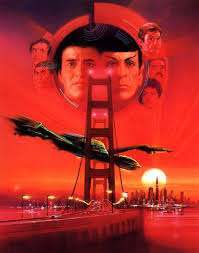 “So…have you invented transparent aluminum yet?”
“So…have you invented transparent aluminum yet?”
The most frequent follow-up question concerns the existence of transparent aluminum, which was originally mentioned in the 1986 film Star Trek IV: The Voyage Home. The notion of transparent aluminum has captured the imagination of countless Star Trek fans, fascinated by the idea of an ultra-strong transparent metal for use in spaceship windows, portals, etc.
There is a long history of materials science in speculative fiction. For example, Superman’s sole physical weakness is kryptonite, a radioactive mineral from his home planet of Krypton. Superman’s only protection against kryptonite radiation is provided by another material, lead, but this also blocks our hero’s x-ray vision.
Moving from DC Comics to the Marvel Universe, another fictional material of extraterrestrial origin, vibranium, is known for its unusual ability to absorb, contain, and release enormous amounts of kinetic energy. The African nation of Wakanda has the world’s only supply of vibranium, providing the material for Black Panther’s superhero suit. The Marvel stories go well beyond the technological implications of vibranium, exploring its impact on Wakandan politics, economics, and culture.
Of course, there is an even longer history of materials science in our real world, where the epochs of human civilization are often defined based on the materials that have had the greatest impact on society. The earliest era of humanity is known as the Stone Age, during which prehistoric humans crafted tools from naturally occurring stone. The Stone Age gave way to the Bronze Age around 2000 BC, when several civilizations around the world crafted bronze alloys by smelting copper and tin. The use of metals expanded in the subsequent Iron Age, beginning around 1200 BC. In each of these eras, the eponymous materials were at the forefront of human innovation, giving a technological advantage to certain civilizations. Moreover, these materials were used as a means of artistic expression, leaving an indelible impact on the culture of each period. The surviving artifacts from these ancient societies have given us clues about the day-to-day lives of early humans.
The modern era has seen a dramatic acceleration in the development of science and technology, much of it fueled by advances in materials science and engineering. From the clothes we wear to the packaging in which we store our food, synthetic polymers have become ubiquitous across all aspects of our everyday lives. The high strength and toughness of modern steel has revolutionized modern architecture, transportation, and urban infrastructure. The discovery of semiconductor materials has enabled the development of computers, photovoltaic solar cells, and satellite communications. Moreover, the invention of ultra-high purity glass fibers for optical communication was essential for the development of the Internet. Highly engineered ceramic materials have been critical components for space exploration and in all modern electronic devices. These are just a few examples of how advances in materials science have left a profound impact on contemporary society.
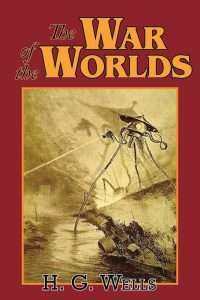 Many advances in materials science have been anticipated by authors of science fiction. In his 1879 short story, “The Senator’s Daughter,” author Edward Page Mitchell presaged the development of electrically resistive heating systems. H.G. Wells has been especially prophetic among science fiction writers, predicting the development of lasers in The War of the Worlds (1898), nuclear technology in The World Set Free (1914), and wireless communication systems in Men Like Gods (1923), all based on advances in materials science and engineering. More recently, Larry Niven’s 1970 novel Ringworld postulated the development of room temperature superconductors, i.e., materials having infinite conductivity. Major advances toward realizing this goal began in the mid-1980s and continue today.
Many advances in materials science have been anticipated by authors of science fiction. In his 1879 short story, “The Senator’s Daughter,” author Edward Page Mitchell presaged the development of electrically resistive heating systems. H.G. Wells has been especially prophetic among science fiction writers, predicting the development of lasers in The War of the Worlds (1898), nuclear technology in The World Set Free (1914), and wireless communication systems in Men Like Gods (1923), all based on advances in materials science and engineering. More recently, Larry Niven’s 1970 novel Ringworld postulated the development of room temperature superconductors, i.e., materials having infinite conductivity. Major advances toward realizing this goal began in the mid-1980s and continue today.
Returning to transparent aluminum, will this fabled material from Star Trek ever become a reality? Aluminum is a metal, which means that the bonding between atoms is governed by a communal sharing of electrons. Materials scientists refer to metals as having a “sea of electrons” which are delocalized from individual atoms, exhibiting collective behavior including high mobility. This high electron mobility is what makes metals such good electrical conductors. Copper, silver, and gold are all well-known for their high conductivities, with copper providing the most economical choice for common electrical wiring. Although its conductivity is lower than that of copper, the higher strength of aluminum makes it a preferred material for certain electrical applications.
While this “sea of electrons” gives metals a distinct advantage for conducting electricity, it also makes them optically opaque. Photons from incoming light find it nearly impossible to penetrate through a metal, since the energy from the photon can be easily absorbed by these conducting electrons and then re-emitted as reflected light. This high degree of reflection is what gives metals their shiny appearance.
 Hence, the best approach for making aluminum transparent is to change the nature of the bonding so it is no longer metallic. The most straightforward way to do this is by incorporating oxygen into the material, i.e., by changing aluminum into aluminum oxide (also known as alumina). By introducing oxygen into the structure, the bonding becomes ionic rather than metallic. The aluminum atoms lose their outer electrons to become positively charged cations; these excess electrons are grabbed by the oxygen atoms, causing them to become negatively charged anions. The positively charged aluminum cations bond to the negatively charged oxygen anions, forming an ionic crystal of alumina.
Hence, the best approach for making aluminum transparent is to change the nature of the bonding so it is no longer metallic. The most straightforward way to do this is by incorporating oxygen into the material, i.e., by changing aluminum into aluminum oxide (also known as alumina). By introducing oxygen into the structure, the bonding becomes ionic rather than metallic. The aluminum atoms lose their outer electrons to become positively charged cations; these excess electrons are grabbed by the oxygen atoms, causing them to become negatively charged anions. The positively charged aluminum cations bond to the negatively charged oxygen anions, forming an ionic crystal of alumina.
Rather than having a delocalized “sea of electrons” as in metals, electrons in alumina are tightly bonded to each of the individual ions. This change in bonding leads to dramatically different properties. For example, the low mobility of electrons in alumina means that it becomes an electrical insulator rather than a conductor. This localization of electrons also helps alumina to become optically transparent, since photons in visible light do not have enough energy to excite the electrons in alumina to higher energy levels, meaning that the light can transmit through an alumina crystal unperturbed.
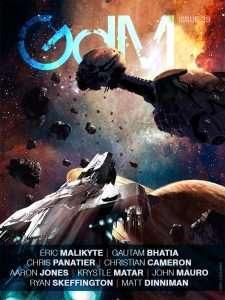 While we have addressed the problem of material bonding, there is still an issue related to its microstructure, i.e., how the various crystals come together to make the bulk structure of the material. Most solid materials are polycrystalline, meaning that they have a microstructure composed of many crystalline grains, each having a random orientation. However, the grain boundaries between neighboring crystals act to scatter light in random directions, giving an opaque white color to polycrystalline alumina. The best way to avoid this scattering is to eliminate grain boundaries by growing a single crystal of alumina, a material better known as sapphire.
While we have addressed the problem of material bonding, there is still an issue related to its microstructure, i.e., how the various crystals come together to make the bulk structure of the material. Most solid materials are polycrystalline, meaning that they have a microstructure composed of many crystalline grains, each having a random orientation. However, the grain boundaries between neighboring crystals act to scatter light in random directions, giving an opaque white color to polycrystalline alumina. The best way to avoid this scattering is to eliminate grain boundaries by growing a single crystal of alumina, a material better known as sapphire.
Sapphire is noted for its high strength and hardness, as well as its outstanding optical transparency. These properties make it an ideal material to protect wristwatches and—you guessed it—to make high-durability windows like those in Star Trek.
Putting aside the question of transparent alumin(a/um), science fiction gives authors the opportunity to imagine beyond the contemporary knowledge of science and engineering, asking intriguing “what if” questions about potential technological advancements and their impact on society. Just as importantly, science fiction raises ethical questions about the use of this technology, giving the audience an opportunity to debate its appropriate usage. This often-underappreciated aspect of science fiction is a key part of what makes it so crucial for modern society, especially as the consequences for the misuse of technology become ever more dire.
This essay was originally published in Grimdark Magazine #39.
The post The Quest for Transparent Aluminum: Materials Science in Science Fiction appeared first on Grimdark Magazine.
August 17, 2024
REVIEW: Godzilla Minus One
The Godzilla franchise has seen a kaiju-sized resurgence recently with Japan’s favourite monster appearing in big budget movies on the big screen and on TV. Whilst the English-language efforts have had their merits and drawn in a large audience, it is Godzilla Minus One that all the buzz about it going into the awards season. A Japanese-language movie that takes Godzilla back to its roots with a story taking place in Tokyo just after the horrors of World War II, this film promised a more traditional story with the world’s most famous kaiju when compared to the ones seen in Monarch: Legacy of Monsters, and Godzilla x Kong: The New Empire.
 Whilst not a grimdark film, Godzilla Minus One has a dark tale and conflicted characters that will appeal to this audience. It plays things straight, starting off at the end of World War II as kamikaze pilot Kōichi Shikishima fakes a fault on his plane and lands on Odo Island. There he encounters the terrifying dinosaur-like creature of Godzilla who attacks the garrison on the island. Kōichi is asked to shoot from his plane but he panics and is knocked unconscious. Once awake, he is ashamed at his inaction and blamed by the only other survivor for not taking down Godzilla. Plagued with survivor’s guilt, he heads home to find that his parents have been killed in the bombing of Tokyo. Kōichi helps a woman and an orphaned baby and takes on the job of clearing mines from the sea. Life moves on but the nuclear tests by the United States at Bikini Atoll have caused Godzilla to grow large and the creature becomes a threat to the whole of Japan. Kōichi knows the devastation that can be caused by Godzilla and is forced to overcome his demons to save the people around him and stop living in the past.
Whilst not a grimdark film, Godzilla Minus One has a dark tale and conflicted characters that will appeal to this audience. It plays things straight, starting off at the end of World War II as kamikaze pilot Kōichi Shikishima fakes a fault on his plane and lands on Odo Island. There he encounters the terrifying dinosaur-like creature of Godzilla who attacks the garrison on the island. Kōichi is asked to shoot from his plane but he panics and is knocked unconscious. Once awake, he is ashamed at his inaction and blamed by the only other survivor for not taking down Godzilla. Plagued with survivor’s guilt, he heads home to find that his parents have been killed in the bombing of Tokyo. Kōichi helps a woman and an orphaned baby and takes on the job of clearing mines from the sea. Life moves on but the nuclear tests by the United States at Bikini Atoll have caused Godzilla to grow large and the creature becomes a threat to the whole of Japan. Kōichi knows the devastation that can be caused by Godzilla and is forced to overcome his demons to save the people around him and stop living in the past.
Godzilla Minus One was shot on a modest budget but the effects are better than some recent Hollywood blockbusters. The film won an Academy Award (a first for a Godzilla film) for special effects and it is well deserved. This is a beautiful film with characters worth rooting for and a clear message about overcoming loss and moving on. The links between the original Godzilla from 1954 is clear (this year is the setting for much of this movie) and Godzilla Minus One feels like a bit of a reset for the franchise and it has produced one of the best monster movies in recent memory. Released not long after the award-winning behemoth that is Christopher Nolan’s Oppenheimer, the two films remind us of the danger of unrestricted power in their own very different ways, each managing to entertain and teach a lesson to an audience in a world that feels more chaotic as each day goes by. The film is best watched (as with pretty much every film in my opinion) with subtitles and in its original language. A black and white version of the film has also been released that adds to the setting and is just as beautiful as the original for any who would want another reason to give this short but brilliant film a second watch.
A budget monster movie with a heart, Godzilla Minus One is a beautiful film that is the perfect watch for any wishing to dive into the Godzilla series for the first time and for those who have been long-time fans and miss the good old days. The story is simple yet compelling and the award-winning effects will keep you glued to the screen as Godzilla does what it does best. A brilliant monster movie created with love by a team who obviously cared for the source material.
The post REVIEW: Godzilla Minus One appeared first on Grimdark Magazine.
August 16, 2024
REVIEW: The Dissonance by Shaun Hamill
The Dissonance is the latest contemporary fantasy novel by author Shaun Hamill. Hamill may be known to readers for his novel writing with A Cosmology of Monsters or his short fiction, which includes writing in the Conan universe. The Dissonance is the first of his works I have read, and overall, I have enjoyed reading it. However, as a contemporary fantasy (although it deals with some very dark topics and events), it is a departure from many of my usual reading choices. Hamill’s combination of horror and fantasy worked well for me, similar to Leigh Bardugo’s Ninth House or Stephen King’s The Dark Tower series, and has many of the features a fan of darker fantasy would enjoy.
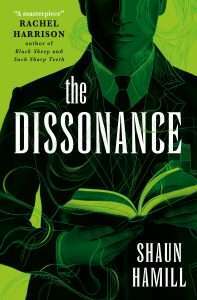 Described as an “epic contemporary fantasy,” The Dissonance is the story of four unlikely friends, Hal, Athena, Erin, and Peter, their accidental discovery of magic, and the consequences of their terrible mistakes. Trained by Peter’s eccentric guardian, Professor Marsh, the four learn to control the dissonance – the magical energy in the world around them. They study this secret system as a coven, bound together until their bond is shattered one day. Twenty years on, alone and severed from one another, terrifying happenings and an anniversary commemoration invite bring the coven back together to their tiny Texan hometown of Clegg. Across the state border in Alabama, closeted teen Owen joins his friends in a (what he believes to be a joke) séance. There, they accidentally summon a murderous demon. This demon kills all, bar Owen, who is taken hostage and ordered to drive to Clegg. Something apocalyptic is brewing, and no hero is in sight to save the world.
Described as an “epic contemporary fantasy,” The Dissonance is the story of four unlikely friends, Hal, Athena, Erin, and Peter, their accidental discovery of magic, and the consequences of their terrible mistakes. Trained by Peter’s eccentric guardian, Professor Marsh, the four learn to control the dissonance – the magical energy in the world around them. They study this secret system as a coven, bound together until their bond is shattered one day. Twenty years on, alone and severed from one another, terrifying happenings and an anniversary commemoration invite bring the coven back together to their tiny Texan hometown of Clegg. Across the state border in Alabama, closeted teen Owen joins his friends in a (what he believes to be a joke) séance. There, they accidentally summon a murderous demon. This demon kills all, bar Owen, who is taken hostage and ordered to drive to Clegg. Something apocalyptic is brewing, and no hero is in sight to save the world.
At its core, The Dissonance is a novel about friendship. As explained by Hamill’s author note at the end of the story, he wrote it during the pandemic while missing his friends and contact with them. The book has a split time narrative between the modern 2019 timeline and the “historical” storyline of Hal, Athena, Erin, and Peter in their teens in the late 1990s. The friendship of these four, their found family, and their growing up form one of the key themes in The Dissonance. The novel also has multiple points of view, so as readers, we read from each character’s younger and adult perspectives.
The second central theme is magic, the dissonance, which they learn to harness. As a magic system, dissonance is used by harnessing the negative emotions in oneself and drawing upon them. Unsurprisingly, a group of four misfits with varying levels of traumatic childhoods had a lot of emotional pain to draw from, and the coven together became proficient users of dissonance. One of the most upsetting parts of The Dissonance for me was learning about the lead characters’ struggles as teenagers and then reading how this translated to adult suffering, particularly Hal’s descent into alcoholism.
As I have said, The Dissonance would not be my first choice in recommending a read to a grimdark fan. But there is a lot in this novel that puts it grimdark adjacent, so it would still hold some appeal to our crowd. There are no heroes here, and the four main characters are utter misfits. Before forming their coven, it seems they were friends because they had no one else. They do face insurmountable odds with almost no hope of success. Sometimes, they are cowards. Sometimes, they are cruel. But they also get the chance to make amends and be forgiven. One of my favourite descriptions of grimdark comes from Anna Smith Spark’s essay “Grimdark and Nihilism,” where she says:
‘Grimdark is that awareness. The reality of pain, the knife blade cutting in. And the determination to go on, keep on, fight on. There are no heroes, no certainty, there’s no bright shining prophecy of light. Just messed-up selfish wretched people trying to live their lives as best they can, trying to find something of love and happiness, trying to survive all the pain life brings.’
That sentiment is what Hamill has running through all of The Dissonance. The characters use the pain and trauma from their very messed up lives to do magic, and even knowing that they probably will not succeed in the trials they face, they still try to make a difference. Thank you very much to Shaun Hamill and the team at Titan for sending over a review copy of The Dissonance.
Read The Dissonance by Shaun HamillThe post REVIEW: The Dissonance by Shaun Hamill appeared first on Grimdark Magazine.
August 15, 2024
REVIEW: The Deviant #6 by James Tynion (W) and Joshua Hixson (A)
This is the law of The Deviant #6: The System did it once, the System will do it again.
If you want to know why Grimdark Magazine is reviewing The Deviant #6, then the above is the one abiding lesson you can take away from reading this comic.
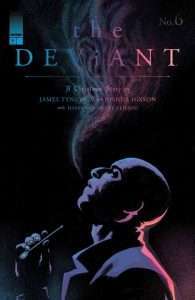 Once the System has it in your sights, no matter the strength of your alibi, the certainty of your memory, the fact that with your own eyes you’ve seen evidence contrary to what the System is preparing to the crash down on your head, you can’t win. It’s as simple as that. The System owns you body and soul, and with no reason other than it can, it will incarcerate you for the rest of your life, or better yet, yoke you to a gurney and pump you full of chemicals until the baying mob is satisfied.
Once the System has it in your sights, no matter the strength of your alibi, the certainty of your memory, the fact that with your own eyes you’ve seen evidence contrary to what the System is preparing to the crash down on your head, you can’t win. It’s as simple as that. The System owns you body and soul, and with no reason other than it can, it will incarcerate you for the rest of your life, or better yet, yoke you to a gurney and pump you full of chemicals until the baying mob is satisfied.
Until the next victim comes along, with the gun sights of the System firmly aimed at their back.
The Deviant #6 is one long howl of frustrated fury at the way Michael, the protagonist of this series thus far, is treated by the law. He’s not really seen in this issue. It is only his partner Derek who firmly believes that Michael is being set up for a murder he didn’t commit. Michael’s divorced parents think he did it, mutual friends of Michael and Derek think he did it, and the district attorney, the very embodiment of the System, definitely believes he did it.
The very definition of cosmic horror is Creation’s indifference to humanity’s existence. The Deviant #6 narrows the viewpoint to a relatively mundane murder mystery in the American Midwest, but the idea still applies. The System, embodying all arms of the tentacular nightmare that is the American ‘justice’ system, is completely indifferent to those it hunts. Indeed, it cares just as little for the victim, their families, and the devastation all involved suffer. All it cares about is results (and the votes of a permanently frightened populace) and even then, whether the ‘result’ is the right one or not isn’t particularly contemplated to any great degree.
As always, there’s a barely suppressed fury in James Tynion’s scripting. The injustice of what is happening bubbles away under the surface, eating away at friendships and the sense of what is really fair and just in society. Michael’s partner Derek is the embodiment of this fury, lashing out at Michael’s parents for seemingly being willing to believe their son is a crazed murderer, while listening uncomprehendingly as a mutual friend lays out in precise detail why Michael is the killer. It’s a masterclass in methodical plotting and writing, allowing the emotions to spill onto the page in concentrated bursts that are revealing as they are authentic.
And as usual, Joshua Hixson’s artwork never misses the mark. The wintry setting, cold and dark and shadowy, perfectly complements the bleak mood of The Deviant #6. A lack of clear lines plus the muddy colouring create a world where there are no lines of demarcation, where the System does what it wants because it can, despite evidence to the contrary, and where the lives of the innocent are thus forfeit. The Deviant #6 is a compelling story, one that builds on the earlier issues to great effect, and well worth your time.
Read The Deviant #6The post REVIEW: The Deviant #6 by James Tynion (W) and Joshua Hixson (A) appeared first on Grimdark Magazine.
August 14, 2024
REVIEW: When the Blood Has Dried #4 by Gary Moloney (W) and Daniel Romero (A)
Adventure awaits in When the Blood Has Dried Issue 4, and that’s not always a good thing. After trying to best her in a game of skill to determine the fate of her village, the Adventure’s Guildsman Darius loses to Maebh, thereby buying her more time as the Guild licks its wounds. Darius is relentless; he’s so determined to just win, as if losing to him isn’t an option. He hatches a plan to take the village by force, and Maebh responds in kind to defend it. When the Blood Has Dried Issue 4 shows that even though Maebh tried to win the fair way, she isn’t above getting her hands bloody to protect what she sees as hers.
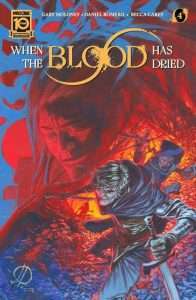 Maebh herself has a similar obsession to winning than Darius, but for different motivations. For her, she’s found a home in her bar, this village. A place that she can finally just exist. Fighting for that home is everything to her, and she won’t give it up easily. Daniel Romero’s art flows so well from one panel to the next, showcasing Maebh’s determined heroism and Darius’ obsessive villainy.
Maebh herself has a similar obsession to winning than Darius, but for different motivations. For her, she’s found a home in her bar, this village. A place that she can finally just exist. Fighting for that home is everything to her, and she won’t give it up easily. Daniel Romero’s art flows so well from one panel to the next, showcasing Maebh’s determined heroism and Darius’ obsessive villainy.
When the Blood Has Dried Issue 4 also teases the promise of the story: the showdown. While it is a fantasy comic, it also has some Western influences as well. By the end of the issue, Darius and his posse have come to take the town, and Maebh is the only person that stands between them. It’s the lead up to what I imagine to be an exciting, action-packed finale. The final page alone sends shivers, as Maebh draws blades against her former Guild.
What I really enjoy about this issue is that everything comes together in such a neat little package. Gary Moloney’s writing, alongside Romero’s art and Becca Carey’s lettering help deliver the excitement and buildup of the final confrontation, one that I think will live up to the title of the series. When the Blood Has Dried has been such a fun series, a small slice of a bigger fantasy world that shows a character just trying to make a better life for themselves, trying to start over. Maebh’s determination to hold on to something that’s actually good in her life for once is admirable, and the fact that she’s ready to bear steel in order to do it shows that she’s also willing to die for the life she’s created. I could imagine many readers identifying with Maebh’s actions.
When the Blood Has Dried Issue 4 offers the calm before the storm in the next issue, a real look into the conflict between two unyielding forces: Maebh’s hope for the future and Darius’ thirst for victory. I think readers would enjoy the fantasy and Western elements, but it’s the examination of these two characters that truly makes this story shine. The art and lettering of each individual panel bring this story to life in a way that only comics can. I’m truly excited for When the Blood Has Dried Issue 5; Maebh deserves an ending, and whether she succeeds or fails, she has shown that she isn’t running away from anything anymore.
Read When the Blood Has Dried #4The post REVIEW: When the Blood Has Dried #4 by Gary Moloney (W) and Daniel Romero (A) appeared first on Grimdark Magazine.
August 13, 2024
REVIEW: Conan the Barbarian #13 by Jim Zub (W) and Doug Braithwaite (A)
Titan Comics’ Conan the Barbarian enters its second year of publication, and a new story arc begins. Issue #12 concluded with an epic confrontation with a powerful enemy, but this installment shifts gears. Rather than pick up where we saw Conan last, the narrative returns to a younger version of the barbarian. Having first gotten a taste of adventure with his participation in the destruction of Aquilonia’s border outpost of Venarium (shown in the Free Comic Book Day 2023 issue, released prior to the start of the monthly series), the teenaged barbarian has taken up his salvaged sword and horned helmet and headed north into the frozen wastes. Feeling unexpectedly deflated after his first victory in battle, Conan remains eager to test himself and discover his place in the world. Over the course of this first issue in the “Frozen Faith” story arc, Conan encounters several threats to his young life, from dangerous wildlife to threatening Northmen, but he wonders if mere survival is enough to give his life meaning.
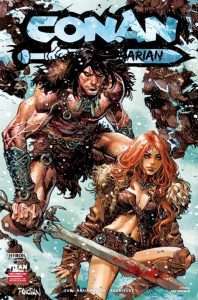 With the start of this new arc, writer Jim Zub has taken the Conan the Barbarian narrative in an intriguing new direction. With so much of the comic’s first year occupied by an ongoing high-stakes plotline involving the malignant influence of the mysterious Black Stone and recurring foe Thulsa Doom it feels like a relief to take a step back from all of that and return to basics. Like the original Robert E. Howard stories themselves, other publishers’ comic series have jumped around to different points in Conan’s adventuring career, and it’s reassuring to see that tendency continue in the current Titan Comics incarnation, rather than follow a strictly linear progression.
With the start of this new arc, writer Jim Zub has taken the Conan the Barbarian narrative in an intriguing new direction. With so much of the comic’s first year occupied by an ongoing high-stakes plotline involving the malignant influence of the mysterious Black Stone and recurring foe Thulsa Doom it feels like a relief to take a step back from all of that and return to basics. Like the original Robert E. Howard stories themselves, other publishers’ comic series have jumped around to different points in Conan’s adventuring career, and it’s reassuring to see that tendency continue in the current Titan Comics incarnation, rather than follow a strictly linear progression.
Zub gives readers an uncommonly intimate look into Conan’s thoughts with this issue. Flashbacks show Conan as a child, untrained but already fierce at a tender age. His father tells him of the Cimmerians’ ancestral god Crom, who lives in the mountains, judging his descendants from afar. Crom famously declines to intervene on his worshippers’ behalf, but he is said to gift every Cimmerian at birth with an iron will. This issue shows Conan as a child, questioning the beliefs his people take for granted and then carrying those doubts into his teenage years. Conan has been tested in battle, but he has emerged unfulfilled, skeptical of religion, and almost nihilistic. This feels like a risky approach to take with a character like Conan; sword & sorcery heroes usually skip the origin story and are commonly depicted fully formed and self-assured. Are readers ready for Conan the Larval Barbarian? I am unsure of what to think at this point, but I am curious to see where Zub takes the character in the next few issues.
“Frozen Faith” marks the return of artist Doug Braithwaite, who previously handled the “Thrice Marked for Death” story arc (Conan the Barbarian issues #5-8). Braithwaite renders this issue’s action scenes and snowy landscapes with aplomb, but I still feel like he etches too many fine lines into Conan’s face, making him appear at least a decade older than he is supposed to be at this point in his life.
Conan the Barbarian #13 offers readers a fresh start. This issue delivers a change of pace for existing readers and serves as a gentle jumping-on point for newcomers curious about Titan Comics’ most successful series to date. While core sword & sorcery enthusiasts find this meditative depiction of Conan slightly jarring, I suspect the added introspection may appeal to grimdark fans hungry for a little existential philosophy in their dark fantasy.
Read Conan the Barbarian #13The post REVIEW: Conan the Barbarian #13 by Jim Zub (W) and Doug Braithwaite (A) appeared first on Grimdark Magazine.
August 12, 2024
REVIEW: Lady Macbeth by Ava Reid
Ava Reid dips her quill into Shakespeare’s ink pot, adopting the concept of one of his most famous villains, Lady Macbeth. In Reid’s reimagining of the story, Lady Macbeth, she gives voice to Roscille, the bastard-child of a French Lord, as she is sent off to Scotland to wed Lord Macbeth in a politically arranged marriage. Her presence unsettles the castle, and everyone in it, as Roscille is ‘witch-touched’, with hair as pale as her skin, and a stigma attached to her that claims she can control the minds of men, inciting madness within them through mere eye contact alone. Once married, Roscille discovers that her husband is more than just a man of brute force, as he plays a game of prophecies and secrets that he keeps from his court. Lady Macbeth retains the dark, gothic and atmospheric elements from the source material, but bends the story to accommodate her version of Roscille’s tales and origin story. This feminist twist on a famous male-centered story is a refreshing addition to Ava Reid’s already impressive repertoire of works.
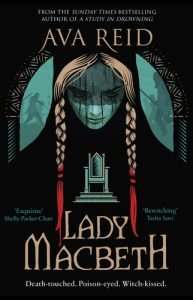 It is important to emphasise that you will not find the duplicitous and conniving Lady Macbeth from the original script here, who bent her husband’s will to her own. Instead, you’ll find a younger rendition of Lady Macbeth, naïve, but still with a sharp eye for survival. Similarly, you’ll find that Macbeth is not as malleable as his namesake from the original but is instead more vigilant about his desire to gain power. As the bastard daughter of a French Lord, Roscille is familiar with her position at court, and how she is expected to live adjacent to a power-hungry man. I particularly enjoyed how Roscille would use this to her advantage, feigning “I am just a woman”, whenever a plan of hers slipped up. She masks herself from the rest of the court, metaphorically and literally in order to survive. For this reason, Roscille is mostly covered by a veil, one that feels both like a barrier of protection against those around her, as well as a cage of her own.
It is important to emphasise that you will not find the duplicitous and conniving Lady Macbeth from the original script here, who bent her husband’s will to her own. Instead, you’ll find a younger rendition of Lady Macbeth, naïve, but still with a sharp eye for survival. Similarly, you’ll find that Macbeth is not as malleable as his namesake from the original but is instead more vigilant about his desire to gain power. As the bastard daughter of a French Lord, Roscille is familiar with her position at court, and how she is expected to live adjacent to a power-hungry man. I particularly enjoyed how Roscille would use this to her advantage, feigning “I am just a woman”, whenever a plan of hers slipped up. She masks herself from the rest of the court, metaphorically and literally in order to survive. For this reason, Roscille is mostly covered by a veil, one that feels both like a barrier of protection against those around her, as well as a cage of her own.
Reid writes eloquently, and with a smooth and fluid grace; her prose fits so perfectly well with the gothic elements of the story. Lady Macbeth felt haunting but had a flippant lightness to it that eased the heaviness of the story. This was mostly reflected in the small romantic elements that flitted throughout the novel. The pacing of the book was initially steady, and easy to indulge in, until the end, when the plot became quite rushed and ultimately created an ending that almost felt too easy. Fantastical elements within the novel do exist, especially the expected appearance of Shakespeare’s three witches and their prophecies, as well as Reid’s addition of Roscille’s madness-inciting stare. Whilst these appropriately slot into the pockets of this story as a whole, there is a particular fantastical element that simply does not. I cannot delve into it properly without potentially spoiling the book, but once you’ve read it, you’ll know exactly what I’m referring to here. It was definitely an aspect of the story that took me by surprise, and not pleasantly, and almost directed the story down a juvenile turn.
I greatly enjoyed this reimagining and hope that Reid continues to indulge in twisting great literary pieces into her own style. I think it suits her well. For grimdark readers that enjoy a lurid exploration of monarchies, court-life and politics, with a hint of romance, Lady Macbeth would be a great addition to your list. This was the first Ava Reid book I’ve read, and it will most certainly not be the last.
Read Lady Macbeth by Ava ReidThe post REVIEW: Lady Macbeth by Ava Reid appeared first on Grimdark Magazine.
August 11, 2024
REVIEW: Conan: City of the Dead by John C. Hocking
Conan: City of the Dead is a deluxe omnibus packaging of two pastiche novels by sword & sorcery veteran John C. Hocking: the fan favorite Conan and the Emerald Lotus and its long-awaited sequel Conan and the Living Plague. Conan and the Emerald Lotus was originally published by Tor Books in 1995 and has been out of print for roughly two decades. While Conan and the Living Plague was penned soon after the release of Emerald Lotus, a chain of unfortunate complications at the publishing end prevented the novel from receiving an official release until now, nearly 30 years after its creation.
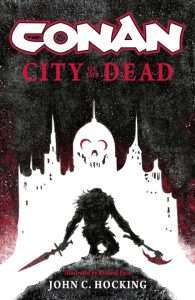 Fans of Robert E. Howard’s enduring Conan the Barbarian character have long had a fraught relationship with the pastiche novels written by non-Howard authors. While there were occasional attempts to revive the stories in their original form as published in Weird Tales magazine—perhaps most notably by horror legend Karl Edward Wagner—in the decades following Howard’s death in 1936, the most ubiquitous editions of the stories were those produced under the stewardship of L. Sprague de Camp and Lin Carter. In addition to reprinting Howard’s work, de Camp and Carter took it upon themselves to complete Howard’s unfinished stories, rewrite stories featuring Howard’s other pulp heroes into Conan adventures, and even write wholly original tales starring the barbarian. As the Conan paperback series shifted to different publishers, other authors including Robert Jordan, Poul Anderson, and Harry Turtledove joined de Camp and Carter in contributing their own novel-length Conan adventures, to the extent that by the Tor Books era (1982-2004) pastiche works by other hands were much more readily available than the Howard stories that inspired them. Publishers Wandering Star and Del Rey upended all this beginning in 2003, collecting and releasing the Howard texts free of the modifications and embellishments of subsequent authors. For many Conan fans, this was their first opportunity to read the unadulterated texts, and it inspired a mini backlash against the pastiche novels, many of which diverged widely from Howard’s tone and characterization of Conan. Twenty years have passed, however, and it seems that Conan fans have begun to reevaluate the role and value of pastiche. While some pastiche novels are widely considered better left forgotten, others have become much sought after. Alongside installments by Karl Edward Wagner and John Maddox Roberts, Hocking’s Conan and the Emerald Lotus has become a lucky find for secondhand bookstore shoppers. The collected Conan: City of the Dead release by Titan Books makes Emerald Lotus and its long-lost sequel available to the general public at last.
Fans of Robert E. Howard’s enduring Conan the Barbarian character have long had a fraught relationship with the pastiche novels written by non-Howard authors. While there were occasional attempts to revive the stories in their original form as published in Weird Tales magazine—perhaps most notably by horror legend Karl Edward Wagner—in the decades following Howard’s death in 1936, the most ubiquitous editions of the stories were those produced under the stewardship of L. Sprague de Camp and Lin Carter. In addition to reprinting Howard’s work, de Camp and Carter took it upon themselves to complete Howard’s unfinished stories, rewrite stories featuring Howard’s other pulp heroes into Conan adventures, and even write wholly original tales starring the barbarian. As the Conan paperback series shifted to different publishers, other authors including Robert Jordan, Poul Anderson, and Harry Turtledove joined de Camp and Carter in contributing their own novel-length Conan adventures, to the extent that by the Tor Books era (1982-2004) pastiche works by other hands were much more readily available than the Howard stories that inspired them. Publishers Wandering Star and Del Rey upended all this beginning in 2003, collecting and releasing the Howard texts free of the modifications and embellishments of subsequent authors. For many Conan fans, this was their first opportunity to read the unadulterated texts, and it inspired a mini backlash against the pastiche novels, many of which diverged widely from Howard’s tone and characterization of Conan. Twenty years have passed, however, and it seems that Conan fans have begun to reevaluate the role and value of pastiche. While some pastiche novels are widely considered better left forgotten, others have become much sought after. Alongside installments by Karl Edward Wagner and John Maddox Roberts, Hocking’s Conan and the Emerald Lotus has become a lucky find for secondhand bookstore shoppers. The collected Conan: City of the Dead release by Titan Books makes Emerald Lotus and its long-lost sequel available to the general public at last.
Conan and the Emerald Lotus finds the titular barbarian coerced into working as an assassin for a twisted wizard hoping to eliminate a rival sorceress and steal her cache of emerald lotus powder, an addictive herbal substance that amplifies magical power while extracting a terrible physical cost from its users. Conan switches allegiances as soon as he manages to extricate himself from his employer’s curse, however. He sets out with the sorceress Lady Zelandra and her colorful retinue—tempestuous knife-throwing young maiden Neesa and a rotund, mute bodyguard named Heng Shih—escorting them into the forbidden deserts of Stygia in search of the source of the emerald lotus and the shadowy manipulator that controls its supply. Conan and the Emerald Lotus deals extensively with the price of power and the extreme lengths to which sorcerers will go to further their mastery of world-warping magic. While Lady Zelandra is a sympathetic character and an ally to Conan, Hocking makes it clear that her lust for power and dependency on the emerald lotus put her on the same grim path as her warped competitors, just not quite as far along.
Conan and the Living Plague is another dark adventure set into motion by evil sorcery. Now serving in a mercenary army, Conan and his comrade-in-arms Shemtare (a character briefly featured in Conan and the Emerald Lotus) are hired to pilfer riches from the vault of Dulcine, a city-state both ravaged by a lethal contagion and besieged by an invading army from without. The resulting adventure is a covert heist, with Conan and a handful of companions of varying levels of competency and trustworthiness venturing into territory in which a single misstep means instant death. Along the way Conan discovers that the epidemic is no natural malady, but instead an intelligent and malignant entity with a yearning for conquest.
Conan: City of the Dead delivers the sort of blood and thunder that sword & sorcery readers expect. Both collected books share relentless pacing, frequent and savage combat, and plentiful horrific elements. Where Conan and the Emerald Lotus features significant moments of cosmic horror—fans of the Cthulhu Mythos will recognize references in the mystical language intoned by the book’s sorcerers— Conan and the Living Plague leans especially hard on the otherworldly terror. The Living Plague is rendered in an intensely creepy and alien manner, and—as Conan is dismayed to learn—it’s not the worst thing lurking beyond the stars.
According to interviews, Hocking wrote Conan and the Emerald Lotus to address some of the flaws common in latter day pastiche and recapture some of the magic of the original Howard, and by that standard Conan: City of the Dead is a tremendous success. While other authors (e.g., Scott Oden) may more faithfully evoke Howard’s prose style, Hocking demonstrates a deep understanding of Conan as a character. He captures Conan’s explosive physicality, emphasizing his pantherish reflexes over sheer strength. And where lesser authors depict Conan as blithely fearless, through both novels Hocking shows Conan as experiencing fear, but not allowing himself to succumb to it. The ability to power through that fear and do what must be done is what separates Conan from his compatriots.
Readers who enjoy Conan: City of the Dead are strongly encouraged to seek out Hocking’s novella “Black Starlight.” Originally serialized in issues of Marvel Comics’ Conan the Barbarian from 2019-2020, the story was collected and re-released in 2023 as part of Titan Books’ ongoing Heroic Legends series of digital shorts. “Black Starlight” begins immediately after the conclusion of Conan and the Emerald Lotus, chronicling a further adventure of Conan with Lady Zelandra, Neesa, and Heng Shih in the wilds of Stygia. Not including “Black Starlight” as part of the Conan: City of the Dead package seems like a missed opportunity on Titan Books’ part but given the fact that they rescued it from falling into obscurity with their ebook release it seems uncharitable to grumble too much.
As a long-time fan of the character, it’s exciting to see Titan Books release both new novels starring Conan (e.g., Conan – Blood of the Serpent) alongside long out-of-print treasures like Conan and the Emerald Lotus. The inclusion of the never-before-seen Conan and the Living Plague sweetens the deal, making Conan: City of the Dead a must-buy even for those lucky readers who already own the original Emerald Lotus paperback. Newcomers to Conan are still advised to start with the original Robert E. Howard tales, but if you’ve devoured those and yearn for more, Conan: City of the Dead is the cream of the pastiche crop.
Read Conan: City of the Dead by John C. HockingThe post REVIEW: Conan: City of the Dead by John C. Hocking appeared first on Grimdark Magazine.
August 10, 2024
REVIEW: Asunder by Kerstin Hall
Well, Kerstin Hall can probably expect some of my therapy bills in her inbox soon, because I think Asunder just broke me in the best way possible. Brimming with arcane horrors, uncanny atmosphere, darkly wondrous magic, divine meddling, broken yet loveable characters, and brutal emotional gut punches, this is truly the fantasy horror adventure of my darkest dreams.
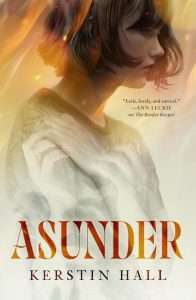 In a foolishly desperate act in her late teens, Karys Eska bargained her soul away to a terrifying eldritch being, which granted her the abilities of a Deathspeaker; she can communicate with the newly departed through touch, and uses her gifts to investigate suspicious deaths around the city. However, her latest job suddenly goes horribly wrong, leaving her with a dying stranger accidentally attached to her shadow. Haunted and hunted by horrors both internal and external, they will have to learn to trust each other and travel their faded empire to find a way to rip their bond apart, before they are both torn asunder by their looming demise.
In a foolishly desperate act in her late teens, Karys Eska bargained her soul away to a terrifying eldritch being, which granted her the abilities of a Deathspeaker; she can communicate with the newly departed through touch, and uses her gifts to investigate suspicious deaths around the city. However, her latest job suddenly goes horribly wrong, leaving her with a dying stranger accidentally attached to her shadow. Haunted and hunted by horrors both internal and external, they will have to learn to trust each other and travel their faded empire to find a way to rip their bond apart, before they are both torn asunder by their looming demise.
Holy smokes, does Hall know how to open a story with an irresistible hook! Her visually and emotionally evocative prose immediately sucked me straight into this dark miasma of a story, and I was instantly obsessed with all the wondrously weird intricacies of this disturbingly haunting yet beautifully mesmerising world.
There’s almost a bit of a technologically advanced aesthetic to this fantasy world, yet it somehow never loses its darkly whimsical air of wonder and magic. Cosmic horrors, semi-sentient beastly transport systems, meddling heralds, arcane artefacts, abominable constructs, and deathspeaker magic; Asunder is truly exploding with wild imagination, and the all-consuming eerie atmosphere just immediately grabbed me by the throat and didn’t let me go until the very end.
From the moment I met my fearsome woman Karys Eska, I was honestly a lost cause. With her sharp snarkiness and well-earned ‘fuck around and find out’ attitude, she reminded me of all the best parts of some of my all-time favourite characters like Mia Corvere (Nevernight), Gideon (Gideon the Ninth), and Eska (Along the Razor’s Edge), except with a less foul mouth. Life has tried to beat her down without remorse and her walls are up high, but she is still an absolute force to be reckoned with and has a heart of gold hiding behind the tough mask.
I absolutely loved exploring this dark world in all its beauty and terror through her eyes, and her strong voice and compelling emotional journey kept me rooted throughout this increasingly wild quest. Despite its addictively smooth pacing and riveting ‘ticking clock’ element, Asunder almost has a bit of an episodic feel to its storytelling. Yet each little ‘side quest’, if you will, only helped organically expand the vibrant world, deepen the lore, heighten the stakes, build out the characters’ backstories and strengthen the gripping emotional core of this narrative (for better or worse, my poor heart).
You see, while this is absolutely Karys’ story first and foremost, I loved how each member of the motley crew that she (unintentionally and sort of begrudgingly?) picked up along the way absolutely gets their time to shine as well. Through the vivacious scholar Winola, we get such a fascinating look into the dizzyingly complex yet darkly wondrous ‘workings’ magic system, while Karys’ childhood friend Haeki blasted open the more mythological aspects of this world through her status as Favoured of one of the capricious heralds. Plus, we get treated to some delicious sapphic tension, so I am always here for that.
However, Karys’ complicated yet amusing dynamic with her mysterious yet cheery shadow companion Ferain (who is a GEM and has now become my new standard for any future shadow daddies, just saying) was absolutely the heart of this story for me, and I never knew I needed the ‘only one head’ trope until Kerstin Hall introduced me to it here; don’t get me wrong, the sloooow-burn romance is just about the most minor and least important aspect of Asunder, yet I was truly gobbling up every single scrap of the simmering tension and playful banter. The way that he slowly and gently breaks through Karys’ carefully built walls was so touching to see, and I loved how Hall wove in themes of (childhood) trauma, grief, trust, redemption and healing through their tentatively developing bond.
I honestly can’t remember the last time I was this deeply engrossed in a story, and I am not kidding when I say that Asunder quite literally tore my soul asunder and left me physically, mentally and emotionally unwell by the end. This story truly just kept zigging whenever I expected it to zag, and I deeply admire Hall for not pulling any punches, especially with that brutally bittersweet cliffhanger of an ending; I needed book 2 yesterday already!
If my unapologetic gushing hadn’t given it away yet, Asunder has instantly become my favourite book I have read this year so far, and if it has any flaws, I sure as hell didn’t notice any of them. If you like the sound of an emotionally-driven fantasy horror that beautifully blends its darkness with a tender heart, then I can’t recommend Asunder highly enough; it’s disturbing yet beautiful, traumatic yet entertaining, epic yet intimate, and it will absolutely leave an irreversible mark on you, whether you like it or not.
Thank you to Tordotcom for providing me with an eARC in exchange for an honest review. All opinions are my own. Asunder is scheduled for release on August 20th, 2024.
Read Asunder by Kerstin HallThe post REVIEW: Asunder by Kerstin Hall appeared first on Grimdark Magazine.



